【STM32H7】第4章 ThreadX FileX文件系统移植到STM32H7(SD卡)
论坛原始地址(持续更新):http://www.armbbs.cn/forum.php?mod=viewthread&tid=100749
第4章 ThreadX FileX文件系统移植到STM32H7(SD卡)
本章节为大家讲解SD卡的ThreadX FileX文件系统移植。
4.1 初学者重要提示
4.2 SD卡硬件接口设计
4.3 SD卡基础知识
4.4 各种存储卡区别
4.5 关于SD卡内部是否自带擦写均衡
4.6 ThreadX FlieX移植步骤
4.7 ThreadX FlieX应用代码测试
4.8 ThreadX FlieX移植接口文件fx_stm32_sdio_driver.c说明
4.9 实验例程
4.10 总结
4.1 初学者重要提示
1、 SDMMC的相关知识点可以看第3章。
2、 操作SD卡是以扇区(512字节)为单位进行操作。
3、 SD卡联盟强烈强烈建议使用此软件来格式化SD/SDHC/SDXC卡,而不要使用各个操作系统随附的格式化工具。通常,操作系统附带的格式化工具可以格式化包括SD/SDHC/SDXC卡在内的各种存储介质,但是可能无法针对SD/SDHC/SDXC卡进行优化,并且可能导致性能降低。
软件下载:http://www.armbbs.cn/forum.php?mod=viewthread&tid=96181 。
4、 STM32H7的SDMMC也支持eMMC:
- 【普及贴】各个厂家eMMC读写速度,镁光,东芝,三星,ISSI和旺宏
http://www.armbbs.cn/forum.php?mod=viewthread&tid=95954
- H7的8线SDIO DMA驱动eMMC的裸机性能,读43MB/S,写18.8MB/S
http://www.armbbs.cn/forum.php?mod=viewthread&tid=95953
5、 支持128GB,64GB的大容量SD卡,需要大家使能ThreadX FileX的exFAT即可。
4.2 SD卡硬件接口设计
STM32H7驱动SD卡设计如下:
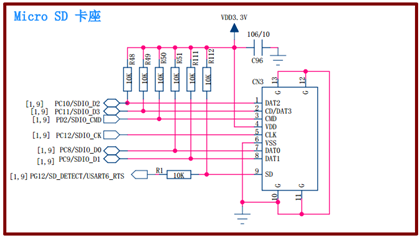
关于这个原理图,要了解到以下几个知识:
- 大家自己设计推荐也接上拉电阻。
- 这里采用SDMMC的4线方式。
4.3 SD卡基础知识
这里将SD卡相关的基础知识为大家做个普及。
4.3.1 SD卡分类
根据不同容量做的区分,主要包括Full SD,miniSD和microSD。
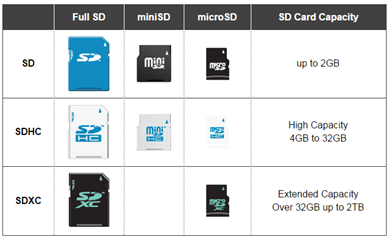
4.3.2 SD卡容量及其使用的文件系统
容量小于2GB(SD卡)使用FAT12或者FAT16,容量在2GB和32GB之间(SDHC卡)使用FAT32,容量大于32GB小于2TB(SDXC卡)使用exFAT。
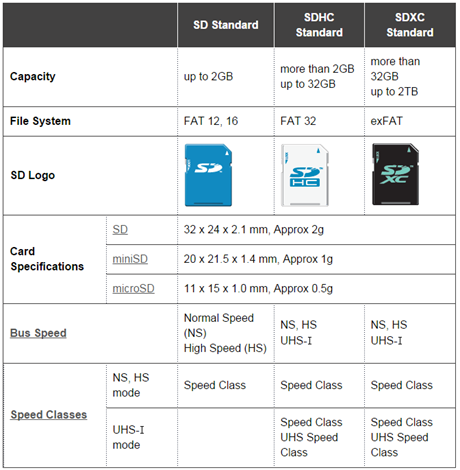
4.3.3 SD卡总线速度和速度等级
SD卡速度:
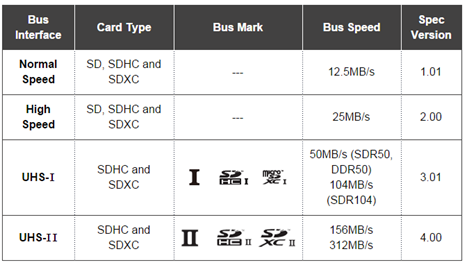
SD卡速度等级:
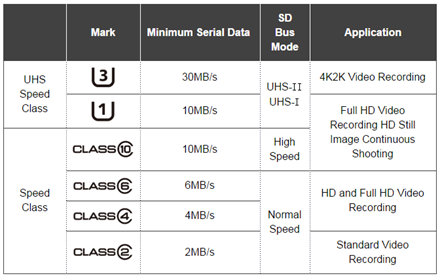
4.4 各种存储卡区别
市面上的卡种类非常多,容易把人搞糊涂,这里将这些卡种类为大家做个区分:
4.4.1 SD卡,miniSD卡,TF卡,MircoSD卡
TF卡是MicroSD卡的另一种叫法,无需做区分。SD卡,miniSD卡,MircoSD卡其实是一种卡,区别是引脚使用上。
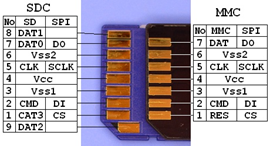
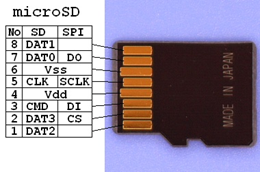
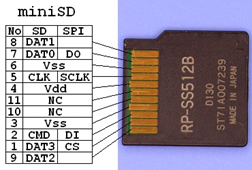
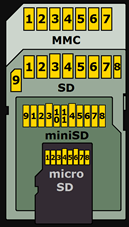
4.4.2 SDIO卡
SDIO卡就是使用SDIO外设来接SD卡。
而为什么叫SDIO,根据wiki百科说明,其实就是SD卡接口规范的扩展,带了输入输出功能,这个接口不仅可以接SD卡,还可以接其它外设,如条形码读卡器,WiFi,蓝牙,调制解调器等。
https://en.wikipedia.org/wiki/SD_card#SDIO_cards
对于STM32的SDIO来说,他就是指STM32的一个外设接口,不仅能够来接SD卡,还可以接其它外设。
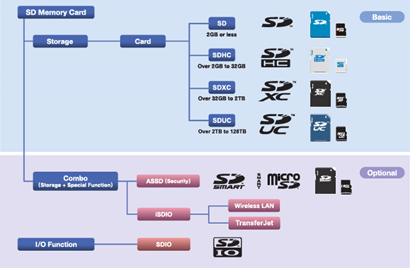
4.4.3 MMC卡,eMMC
截止2018年,市场上已经没有设备内置MMC卡槽,但eMMC得到了广泛应用https://en.wikipedia.org/wiki/MultiMediaCard 。
4.4.4 CF卡
CF卡是早期最成功的存储卡格式之一,像MMC/SD卡都是后来才推出的。CF卡仍然很受欢迎卡之一,并得到许多专业设备和高端消费类设备的支持。截至2017年,佳能和尼康都将CompactFlash用于其旗舰数码相机。佳能还选择了CompactFlash作为其专业高清无带摄像机的记录介质。
基础规格:
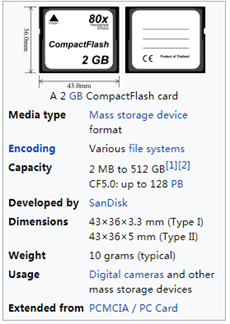
实际效果:
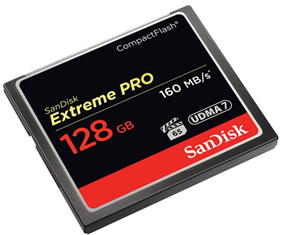
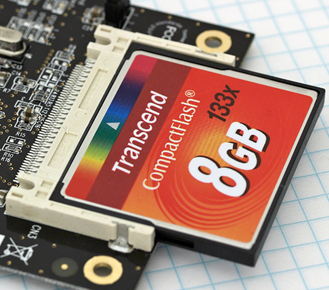
4.4.5 总体区别
来自Wiki:https://en.wikipedia.org/wiki/SD_card#Micro
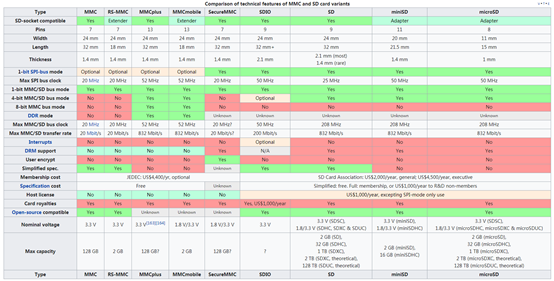
4.5 关于SD卡内部是否自带擦写均衡
根据网上搜的一个闪迪的规格书,里面说是带擦写均衡的:
http://www.armbbs.cn/forum.php?mod=viewthread&tid=102891
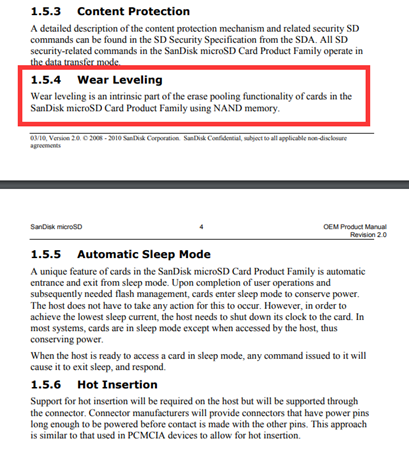
4.6 ThreadX FileX移植步骤
ThreadX FileX的移植步骤如下:
4.6.1 第1步,了解整体设计框架
为了方便大家移植,需要大家先对移植好的工程有个整体认识:
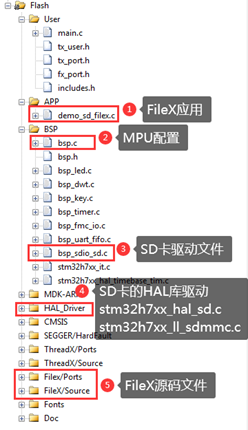
4.6.2 第2步,添加FileX和SDMMC驱动到工程
本教程前面章节配套的例子都可以作为模板使用,在模板的基础上需要添加FileX文件,SDMMC驱动文件和SD卡驱动文件,大家可以直接从本章教程提供的例子里面复制。
- SD卡驱动文件bsp_sdio_sd.c和bsp_sdio_sd.h添加到自己的工程里面,路径不限。
配套例子是放在\User\bsp\src和\User\bsp\inc文件。
- SDMMC驱动文件stm32h7xx_hal_sd.c和stm32h7xx_ll_sdmmc.c
这个是STM32H7的HAL库自带的。
- FileX相关源文件。
大家可以将所有相关文件都复制到自己的工程里面,配套例子是放在\FileX。
4.6.3 第3步,添加工程路径
当前需要添加的两个FileX路径,大家根据自己添加的源文件位置,添加相关路径即可:
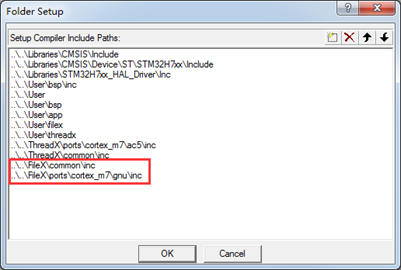
4.6.4 第4步,配置GPIO和时钟
根据大家使用SDMMC1或者SDMMC2配置相应时钟和GPIO,当前V7板子是用的SDMMC1:
__weak void BSP_SD_MspInit(SD_HandleTypeDef *hsd, void *Params) { GPIO_InitTypeDef gpio_init_structure; /* Enable SDIO clock */ __HAL_RCC_SDMMC1_CLK_ENABLE(); /* Enable GPIOs clock */ __HAL_RCC_GPIOB_CLK_ENABLE(); __HAL_RCC_GPIOC_CLK_ENABLE(); __HAL_RCC_GPIOD_CLK_ENABLE(); gpio_init_structure.Mode = GPIO_MODE_AF_PP; gpio_init_structure.Pull = GPIO_NOPULL; gpio_init_structure.Speed = GPIO_SPEED_FREQ_VERY_HIGH; /* D0(PC8), D1(PC9), D2(PC10), D3(PC11), CK(PC12), CMD(PD2) */ /* Common GPIO configuration */ gpio_init_structure.Alternate = GPIO_AF12_SDIO1; /* GPIOC configuration */ gpio_init_structure.Pin = GPIO_PIN_8 | GPIO_PIN_9 | GPIO_PIN_10 | GPIO_PIN_11 | GPIO_PIN_12; HAL_GPIO_Init(GPIOC, &gpio_init_structure); /* GPIOD configuration */ gpio_init_structure.Pin = GPIO_PIN_2; HAL_GPIO_Init(GPIOD, &gpio_init_structure); __HAL_RCC_SDMMC1_FORCE_RESET(); __HAL_RCC_SDMMC1_RELEASE_RESET(); /* NVIC configuration for SDIO interrupts */ HAL_NVIC_SetPriority(SDMMC1_IRQn, 5, 0); HAL_NVIC_EnableIRQ(SDMMC1_IRQn); }
4.6.5 第5步,MPU配置
为了方便大家移植测试,我们这里直接关闭AXI SRAM的读Cache和写Cache(这样就跟使用STM32F1或者STM32F4系列里面的SRAM一样)。此配置是在bsp.c文件的MPU_Config函数里面实现:
/* ********************************************************************************************************* * 函 数 名: MPU_Config * 功能说明: 配置MPU * 形 参: 无 * 返 回 值: 无 ********************************************************************************************************* */ static void MPU_Config( void ) { MPU_Region_InitTypeDef MPU_InitStruct; /* 禁止 MPU */ HAL_MPU_Disable(); #if 0 /* 配置AXI SRAM的MPU属性为Write back, Read allocate,Write allocate */ MPU_InitStruct.Enable = MPU_REGION_ENABLE; MPU_InitStruct.BaseAddress = 0x24000000; MPU_InitStruct.Size = MPU_REGION_SIZE_512KB; MPU_InitStruct.AccessPermission = MPU_REGION_FULL_ACCESS; MPU_InitStruct.IsBufferable = MPU_ACCESS_BUFFERABLE; MPU_InitStruct.IsCacheable = MPU_ACCESS_CACHEABLE; MPU_InitStruct.IsShareable = MPU_ACCESS_NOT_SHAREABLE; MPU_InitStruct.Number = MPU_REGION_NUMBER0; MPU_InitStruct.TypeExtField = MPU_TEX_LEVEL1; MPU_InitStruct.SubRegionDisable = 0x00; MPU_InitStruct.DisableExec = MPU_INSTRUCTION_ACCESS_ENABLE; HAL_MPU_ConfigRegion(&MPU_InitStruct); #else /* 当前是采用下面的配置 */ /* 配置AXI SRAM的MPU属性为NORMAL, NO Read allocate,NO Write allocate */ MPU_InitStruct.Enable = MPU_REGION_ENABLE; MPU_InitStruct.BaseAddress = 0x24000000; MPU_InitStruct.Size = MPU_REGION_SIZE_512KB; MPU_InitStruct.AccessPermission = MPU_REGION_FULL_ACCESS; MPU_InitStruct.IsBufferable = MPU_ACCESS_NOT_BUFFERABLE; MPU_InitStruct.IsCacheable = MPU_ACCESS_NOT_CACHEABLE; MPU_InitStruct.IsShareable = MPU_ACCESS_NOT_SHAREABLE; MPU_InitStruct.Number = MPU_REGION_NUMBER0; MPU_InitStruct.TypeExtField = MPU_TEX_LEVEL1; MPU_InitStruct.SubRegionDisable = 0x00; MPU_InitStruct.DisableExec = MPU_INSTRUCTION_ACCESS_ENABLE; HAL_MPU_ConfigRegion(&MPU_InitStruct); #endif /* 配置FMC扩展IO的MPU属性为Device或者Strongly Ordered */ MPU_InitStruct.Enable = MPU_REGION_ENABLE; MPU_InitStruct.BaseAddress = 0x60000000; MPU_InitStruct.Size = ARM_MPU_REGION_SIZE_64KB; MPU_InitStruct.AccessPermission = MPU_REGION_FULL_ACCESS; MPU_InitStruct.IsBufferable = MPU_ACCESS_BUFFERABLE; MPU_InitStruct.IsCacheable = MPU_ACCESS_NOT_CACHEABLE; MPU_InitStruct.IsShareable = MPU_ACCESS_NOT_SHAREABLE; MPU_InitStruct.Number = MPU_REGION_NUMBER1; MPU_InitStruct.TypeExtField = MPU_TEX_LEVEL0; MPU_InitStruct.SubRegionDisable = 0x00; MPU_InitStruct.DisableExec = MPU_INSTRUCTION_ACCESS_ENABLE; HAL_MPU_ConfigRegion(&MPU_InitStruct); /*使能 MPU */ HAL_MPU_Enable(MPU_PRIVILEGED_DEFAULT); }
4.6.6 第6步,FileX的配置文件fx_port.h设置
fx_port.h虽然是个移植的头文件,推荐在直接在这个文件里面做宏定义修改。
移植阶段,这个里面的配置可以不用动,无需任何修改。需要注意的是我们这里开启了exFAT,对应的宏定义:
#define FX_ENABLE_EXFAT
4.6.7 第7步,添加应用代码
这里将FileX大部分操作函数都做了应用,专门整理到了文件demo_sd_filex.c。通过串口命令进行操作,大家可以直接将这个文件添加到自己的工程里面。
另外注意,如果自己的工程里面没有移植我们其它的驱动,可以直接调用FileX的测试函数,比如浏览SD根目录文件,可以直接调用函数ViewRootDir。
4.7 ThreadX FileX应用代码测试
这里将FileX大部分函数都做了测试。注意,所有用到的函数在FileX官网都有详细说明。
4.7.1 初始化FileX
FileX的初始化通过调用函数fx_system_initialize()实现。
4.7.2 挂载SD卡驱动
挂载SD卡功能是通过函数fx_media_open实现,方便用户实现FileX驱动多个磁盘。
代码如下:
status = fx_media_open(&sdio_disk, "STM32_SDIO_DISK", fx_stm32_sd_driver, 0, media_memory, sizeof(media_memory));
4.7.3 SD卡文件浏览
SD卡根目录的文件浏览代码实现如下:
/* ********************************************************************************************************* * 函 数 名: ViewRootDir * 功能说明: 显示SD卡根目录下的文件名 * 形 参:无 * 返 回 值: 无 ********************************************************************************************************* */ extern SD_HandleTypeDef uSdHandle; static void ViewRootDir(void) { UINT status; UINT attributes; ULONG size; UINT year; UINT month; UINT day; UINT hour; UINT minute; UINT second; UINT cnt; ULONG64 available_bytes; /* 挂载SD卡 */ status = fx_media_open(&sdio_disk, "STM32_SDIO_DISK", fx_stm32_sd_driver, 0, media_memory, sizeof(media_memory)); if (status != FX_SUCCESS) { printf("挂载文件系统失败 -- %d\r\n", status); return; } printf("属性 | 文件大小 | 短文件名 | 长文件名\r\n"); for (cnt = 0; ;cnt++) { /* 读取目录项,索引会自动下移 */ status = fx_directory_next_full_entry_find(&sdio_disk, entry_name, &attributes, &size, &year, &month, &day, &hour, &minute, &second); if (status != FX_SUCCESS || entry_name[0] == 0) { break; } if (entry_name[0] == '.') { continue; } /* 判断是文件还是子目录 */ if (attributes & FX_DIRECTORY) { printf("目录 "); } else { printf("文件 "); } /* 打印文件大小, 最大4G */ printf(" %10d", (int)size); printf(" %s\r\n", (char *)entry_name); /* 长文件名 */ } /* SD卡剩余容量大小 */ status = fx_media_extended_space_available(&sdio_disk, &available_bytes); if (status == FX_SUCCESS) { printf("SD卡剩余容量大小 -- %lldMB\r\n", available_bytes/1024/1024); } /* 卸载SD卡 */ status = fx_media_close(&sdio_disk); if (status != FX_SUCCESS) { printf("卸载文件系统卸载失败 -- %d\r\n", status); } }
- fx_media_open可以上电后仅调用一次,我们这里是为了测试方式,使用前挂载,使用完毕后卸载。
- 代码里面加入了SD卡速度信息打印功能,方便大家了解自己的卡类型。通过查询全局结构体变量uSdHandle来实现。
- 文件浏览通过函数fx_directory_next_full_entry_find实现。
4.7.4 SD卡创建txt文件并写入数据
代码实现如下:
/* ********************************************************************************************************* * 函 数 名: CreateNewFile * 功能说明: 在SD卡创建一个新文件,文件内容填写“www.armfly.com” * 形 参:无 * 返 回 值: 无 ********************************************************************************************************* */ static void CreateNewFile(void) { UINT status; /* 挂载SD卡 */ status = fx_media_open(&sdio_disk, "STM32_SDIO_DISK", fx_stm32_sd_driver, 0, media_memory, sizeof(media_memory)); if (status != FX_SUCCESS) { printf("挂载文件系统失败 -- %d\r\n", status); return; } /* 创建文件 */ status = fx_file_create(&sdio_disk, "armfly.txt"); /* 检测状态 */ if (status != FX_SUCCESS) { /* 失败的话,可以考虑二次创建 */ if (status != FX_ALREADY_CREATED) { printf("创建文件失败\r\n"); } } /* 打开文件 */ status = fx_file_open(&sdio_disk, &fx_file, "armfly.txt", FX_OPEN_FOR_WRITE); if (status != FX_SUCCESS) { printf("打开文件失败\r\n"); } /* 设置到起始位置读取 */ status = fx_file_seek(&fx_file, 0); if (status != FX_SUCCESS) { printf("设置读取位置失败\r\n"); } /* 写入字符串到文件 */ status = fx_file_write(&fx_file, FsWriteBuf, strlen(FsWriteBuf)); if (status == FX_SUCCESS) { printf("armfly.txt 文件写入成功\r\n"); } else { printf("armfly.txt 文件写入失败 %d\r\n", status); } /* 关闭文件 */ status = fx_file_close(&fx_file); /* Check the file close status. */ if (status != FX_SUCCESS) { printf("关闭文件失败\r\n"); } /* 保证文件写入全部生效 */ status = fx_media_flush(&sdio_disk); if (status != FX_SUCCESS) { printf("flush失败\r\n"); } /* 卸载SD卡 */ status = fx_media_close(&sdio_disk); if (status != FX_SUCCESS) { printf("卸载文件系统卸载失败 -- %d\r\n", status); } }
- fx_media_open可以上电后仅调用一次,我们这里是为了测试方式,使用前挂载,使用完毕后卸载。
- 函数fx_file_create用来创建文件。
- 函数fx_file_open用来打开文件。
- 函数fx_file_seek用来设置操作的起始位置。
- 函数fx_file_write用来写入数据。
- 函数fx_file_close用于关闭文件。
- 函数fx_media_flush用于文件写入全部生效。
- 函数fx_media_close用于卸载SD卡。
4.7.5 SD卡文件读取
代码实现如下:
/* ********************************************************************************************************* * 函 数 名: ReadFileData * 功能说明: 读取文件armfly.txt前128个字符,并打印到串口 * 形 参:无 * 返 回 值: 无 ********************************************************************************************************* */ static void ReadFileData(void) { UINT status; ULONG bw; /* 挂载SD卡 */ status = fx_media_open(&sdio_disk, "STM32_SDIO_DISK", fx_stm32_sd_driver, 0, media_memory, sizeof(media_memory)); if (status != FX_SUCCESS) { printf("挂载文件系统失败 -- %d\r\n", status); return; } /* 打开文件 */ status = fx_file_open(&sdio_disk, &fx_file, "armfly.txt", FX_OPEN_FOR_READ); if (status != FX_SUCCESS) { printf("打开文件失败\r\n"); } /* 设置到起始位置读取 */ status = fx_file_seek(&fx_file, 0); if (status != FX_SUCCESS) { printf("设置读取位置失败\r\n"); } /* 读取文件 */ status = fx_file_read(&fx_file, FsReadBuf, sizeof(FsReadBuf), &bw); printf("--%sReadLen = %d\r\n", FsReadBuf, (int)bw); if ((status != FX_SUCCESS)) { printf("读取失败\r\n"); } /* 关闭文件 */ status = fx_file_close(&fx_file); if (status != FX_SUCCESS) { printf("关闭文件失败\r\n"); } /* 卸载SD卡 */ status = fx_media_close(&sdio_disk); if (status != FX_SUCCESS) { printf("卸载文件系统卸载失败 -- %d\r\n", status); } }
- fx_media_open可以上电后仅调用一次,我们这里是为了测试方式,使用前挂载,使用完毕后卸载。
- 函数fx_file_create用来创建文件。
- 函数fx_file_open用来打开文件。
- 函数fx_file_seek用来设置操作的起始位置。
- 函数fx_file_read用来读取数据。
- 函数fx_file_close用于关闭文件。
- 函数fx_media_flush用于文件写入全部生效。
- 函数fx_media_close用于卸载SD卡。
4.7.6 SD卡创建文件夹
代码实现如下:
/* ********************************************************************************************************* * 函 数 名: CreateDir * 功能说明: 在SD卡根目录创建Dir1和Dir2目录,在Dir1目录下创建子目录Dir1_1 * 形 参:无 * 返 回 值: 无 ********************************************************************************************************* */ static void CreateDir(void) { UINT status; /* 挂载SD卡 */ status = fx_media_open(&sdio_disk, "STM32_SDIO_DISK", fx_stm32_sd_driver, 0, media_memory, sizeof(media_memory)); if (status != FX_SUCCESS) { printf("挂载文件系统失败 -- %d\r\n", status); return; } /* 创建目录/Dir1 */ status = fx_directory_create(&sdio_disk, "Dir1"); if (status == FX_SUCCESS) { printf("文件夹Dir1创建成功\r\n"); } else if (status == FX_ALREADY_CREATED) { printf("Dir1 目录已经存在(%d)\r\n", status); } else { printf("fx_directory_create Dir1 失败 (%d)\r\n", status); return; } /* 创建目录/Dir2 */ status = fx_directory_create(&sdio_disk, "Dir2"); if (status == FX_SUCCESS) { printf("文件夹Dir2创建成功\r\n"); } else if (status == FX_ALREADY_CREATED) { printf("Dir2 目录已经存在(%d)\r\n", status); } else { printf("fx_directory_create Dir2 失败 (%d)\r\n", status); return; } /* 创建子目录 /Dir1/Dir1_1 注意:创建子目录Dir1_1时,必须先创建好Dir1 ? */ status = fx_directory_create(&sdio_disk, "Dir1/Dir1_1"); if (status == FX_SUCCESS) { printf("文件夹Dir1/Dir1_1创建成功\r\n"); } else if (status == FX_ALREADY_CREATED) { printf("Dir1/Dir1_1 目录已经存在(%d)\r\n", status); } else { printf("fx_directory_create Dir1/Dir1_1 失败 (%d)\r\n", status); return; } /* 保证文件写入全部生效 */ status = fx_media_flush(&sdio_disk); if (status != FX_SUCCESS) { printf("flush失败\r\n"); } /* 卸载SD卡 */ status = fx_media_close(&sdio_disk); if (status != FX_SUCCESS) { printf("卸载文件系统卸载失败 -- %d\r\n", status); } }
- fx_media_open可以上电后仅调用一次,我们这里是为了测试方式,使用前挂载,使用完毕后卸载。
- 函数fx_directory_create用于创建文件夹。
- 函数fx_media_flush用于文件写入全部生效。
- 函数fx_media_close用于卸载SD卡。
4.7.7 SD卡文件和文件夹删除
代码实现如下:
/* ********************************************************************************************************* * 函 数 名: DeleteDirFile * 功能说明: 删除SD卡根目录下的 armfly.txt 文件和 Dir1,Dir2 目录 * 形 参:无 * 返 回 值: 无 ********************************************************************************************************* */ static void DeleteDirFile(void) { UINT status; UINT i; char path[50]; /* 挂载SD卡 */ status = fx_media_open(&sdio_disk, "STM32_SDIO_DISK", fx_stm32_sd_driver, 0, media_memory, sizeof(media_memory)); if (status != FX_SUCCESS) { printf("挂载文件系统失败 -- %d\r\n", status); return; } /* 删除目录/Dir1 【因为还存在目录非空(存在子目录),所以这次删除会失败】*/ status = fx_directory_delete(&sdio_disk, "Dir1"); if (status == FX_SUCCESS) { printf("删除目录Dir1成功\r\n"); } else if (status == FX_NOT_FOUND) { printf("没有发现文件或目录 :%s\r\n", "/Dir1"); } else { printf("删除Dir1失败(错误代码 = %d) 文件只读或目录非空\r\n", status); } /* 先删除目录/Dir1/Dir1_1 */ status = fx_directory_delete(&sdio_disk, "Dir1/Dir1_1"); if (status == FX_SUCCESS) { printf("删除目录Dir1/Dir1_1成功\r\n"); } else if (status == FX_NOT_FOUND) { printf("没有发现文件或目录 :%s\r\n", "Dir1/Dir1_1"); } else { printf("删除Dir1/Dir1_1失败(错误代码 = %d) 文件只读或目录非空\r\n", status); } /* 删除目录/Dir1*/ status = fx_directory_delete(&sdio_disk, "Dir1"); if (status == FX_SUCCESS) { printf("删除目录Dir1成功\r\n"); } else if (status == FX_NOT_FOUND) { printf("没有发现文件或目录 :%s\r\n", "Dir1"); } else { printf("删除Dir1失败(错误代码 = %d) 文件只读或目录非空\r\n", status); } /* 删除目录/Dir2*/ status = fx_directory_delete(&sdio_disk, "Dir2"); if (status == FX_SUCCESS) { printf("删除目录Dir2成功\r\n"); } else if (status == FX_NOT_FOUND) { printf("没有发现文件或目录 :%s\r\n", "Dir2"); } else { printf("删除Dir2失败(错误代码 = %d) 文件只读或目录非空\r\n", status); } /* 删除文件 armfly.txt */ status = fx_file_delete(&sdio_disk, "armfly.txt"); if (status == FX_SUCCESS) { printf("删除目录armfly.txt成功\r\n"); } else if (status == FX_NOT_FOUND) { printf("没有发现文件或目录 :%s\r\n", "armfly.txt"); } else { printf("删除armfly.txt失败(错误代码 = %d) 文件只读或目录非空\r\n", status); } /* 删除文件 speed1.txt */ for (i = 0; i < 20; i++) { sprintf(path, "Speed%02d.txt", i);/* 每写1次,序号递增 */ status = fx_file_delete(&sdio_disk, path); if (status == FX_SUCCESS) { printf("删除文件%s成功\r\n", path); } else if (status == FX_NOT_FOUND) { printf("没有发现文件:%s\r\n", path); } else { printf("删除%s文件失败(错误代码 = %d) 文件只读或目录非空\r\n", path, status); } } /* 卸载SD卡 */ status = fx_media_close(&sdio_disk); if (status != FX_SUCCESS) { printf("卸载文件系统卸载失败 -- %d\r\n", status); } }
- fx_media_open可以上电后仅调用一次,我们这里是为了测试方式,使用前挂载,使用完毕后卸载。
- 函数fx_directory_delete用于删除文件夹。
- 函数fx_file_delete用于删除文件。
- 函数fx_media_close用于卸载SD卡。
4.7.8 SD卡读写速度测试
代码实现如下,主要是方便大家测试SD卡的读写性能。
/* ********************************************************************************************************* * 函 数 名: WriteFileTest * 功能说明: 测试文件读写速度 * 形 参:无 * 返 回 值: 无 ********************************************************************************************************* */ static void WriteFileTest(void) { UINT status; char path[64]; ULONG bw; uint32_t i,k; uint32_t runtime1,runtime2,timelen; uint8_t err = 0; static uint8_t s_ucTestSn = 0; for (i = 0; i < sizeof(g_TestBuf); i++) { g_TestBuf[i] = (i / 512) + '0'; } /* 挂载SD卡 */ status = fx_media_open(&sdio_disk, "STM32_SDIO_DISK", fx_stm32_sd_driver, 0, media_memory, sizeof(media_memory)); if (status != FX_SUCCESS) { printf("挂载文件系统失败 -- %d\r\n", status); return; } /* 打开文件 */ sprintf(path, "Speed%02d.txt", s_ucTestSn++); /* 每写1次,序号递增 */ /* 写一串数据 */ printf("开始写文件%s %dKB ...\r\n", path, TEST_FILE_LEN / 1024); /* 创建文件 */ status = fx_file_create(&sdio_disk, path); /* 检测状态 */ if (status != FX_SUCCESS) { /* 失败的话,可以考虑二次创建 */ if (status != FX_ALREADY_CREATED) { printf("创建文件失败\r\n"); } } /* 打开文件 */ status = fx_file_open(&sdio_disk, &fx_file, path, FX_OPEN_FOR_WRITE); if (status != FX_SUCCESS) { printf("打开文件失败\r\n"); } /* 设置到起始位置读取 */ status = fx_file_seek(&fx_file, 0); if (status != FX_SUCCESS) { printf("设置读取位置失败\r\n"); } runtime1 = bsp_GetRunTime(); /* 读取系统运行时间 */ for (i = 0; i < TEST_FILE_LEN / BUF_SIZE; i++) { /* 写入字符串到文件 */ status = fx_file_write(&fx_file, g_TestBuf, sizeof(g_TestBuf)); if (status == FX_SUCCESS) { if (((i + 1) % 8) == 0) { printf("."); } } else { err = 1; printf("%s文件写失败\r\n", path); break; } } runtime2 = bsp_GetRunTime(); /* 读取系统运行时间 */ if (err == 0) { timelen = (runtime2 - runtime1); printf("\r\n 写耗时 : %dms 平均写速度 : %dB/S (%dKB/S)\r\n", timelen, (TEST_FILE_LEN * 1000) / timelen, ((TEST_FILE_LEN / 1024) * 1000) / timelen); } /* 关闭文件 */ status = fx_file_close(&fx_file); /* Check the file close status. */ if (status != FX_SUCCESS) { printf("关闭文件失败\r\n"); } /* 保证文件写入全部生效 */ status = fx_media_flush(&sdio_disk); /* Check the file close status. */ if (status != FX_SUCCESS) { printf("fx_media_flush失败\r\n"); } //////////////////////////////////////////////////////////////////////////////////////////////////// /* 开始读文件测试 */ printf("开始读文件 %dKB ...\r\n", TEST_FILE_LEN / 1024); /* 打开文件 */ status = fx_file_open(&sdio_disk, &fx_file, path, FX_OPEN_FOR_READ); if (status != FX_SUCCESS) { printf("打开文件失败\r\n"); } /* 设置到起始位置读取 */ status = fx_file_seek(&fx_file, 0); if (status != FX_SUCCESS) { printf("设置读取位置失败\r\n"); } runtime1 = bsp_GetRunTime(); /* 读取系统运行时间 */ for (i = 0; i < TEST_FILE_LEN / BUF_SIZE; i++) { /* 写入字符串到文件 */ status = fx_file_read(&fx_file, g_TestBuf, sizeof(g_TestBuf), &bw); if (status == FX_SUCCESS) { if (((i + 1) % 8) == 0) { printf("."); } /* 比较写入的数据是否正确,此语句会导致读卡速度结果降低到 3.5MBytes/S */ for (k = 0; k < sizeof(g_TestBuf); k++) { if (g_TestBuf[k] != (k / 512) + '0') { err = 1; printf("Speed1.txt 文件读成功,但是数据出错\r\n"); break; } } if (err == 1) { break; } } else { err = 1; printf("Speed1.txt 文件读失败\r\n"); break; } } runtime2 = bsp_GetRunTime(); /* 读取系统运行时间 */ if (err == 0) { timelen = (runtime2 - runtime1); printf("\r\n 读耗时 : %dms 平均读速度 : %dB/S (%dKB/S)\r\n", timelen, (TEST_FILE_LEN * 1000) / timelen, ((TEST_FILE_LEN / 1024) * 1000) / timelen); } /* 卸载SD卡 */ status = fx_media_close(&sdio_disk); if (status != FX_SUCCESS) { printf("卸载文件系统卸载失败 -- %d\r\n", status); } }
- fx_media_open可以上电后仅调用一次,我们这里是为了测试方式,使用前挂载,使用完毕后卸载。
- 为了实现更高性能的测试,大家可以加大宏定义
#define BUF_SIZE (32*1024) /* 每次读写SD卡的最大数据长度 */
设置的缓冲大小,比如设置为64KB进行测试。
4.8 ThreadX FileX移植接口文件fx_stm32_sdio_driver.c说明
这里将FileX的底层接口文件fx_stm32_sdio_driver.c的实现为大家简单做个说明。
4.8.1 磁盘驱动接口函数fx_stm32_sd_driver
代码如下:
/** * @brief This function is the entry point to the STM32 SDIO disk driver. */ /* It relies on the STM32 peripheral library from ST. * @param None * @retval None */ VOID fx_stm32_sd_driver(FX_MEDIA *media_ptr) { int32_t status; ULONG partition_start; ULONG partition_size; #if (FX_DRIVER_CALLS_BSP_SD_INIT == 0) is_initialized = 1; /* the SD was initialized by the application*/ #endif //TX_INTERRUPT_SAVE_AREA /* before performing any operation, check the status of the SDMMC */ if (is_initialized == 1) { if (check_sd_status() != BSP_ERROR_NONE) { media_ptr->fx_media_driver_status = FX_IO_ERROR; return; } } /* Process the driver request specified in the media control block. */ switch(media_ptr->fx_media_driver_request) { case FX_DRIVER_INIT: { #if (FX_DRIVER_CALLS_BSP_SD_INIT == 1) /* Initialize the SD instance */ if (is_initialized == 0) { status = BSP_SD_Init(); if (status == BSP_ERROR_NONE) { is_initialized = 1; #endif /* create a binary semaphore to check the DMA transfer status */ if (tx_semaphore_create(&transfer_semaphore, "sdmmc dma transfer semaphore", 0) != TX_SUCCESS) { media_ptr->fx_media_driver_status = FX_IO_ERROR; } else { media_ptr->fx_media_driver_status = FX_SUCCESS; } #if (FX_DRIVER_CALLS_BSP_SD_INIT == 1) } else { media_ptr->fx_media_driver_status = FX_IO_ERROR; } } #endif break; } case FX_DRIVER_UNINIT: { tx_semaphore_delete(&transfer_semaphore); #if (FX_DRIVER_CALLS_BSP_SD_INIT == 1) BSP_SD_DeInit(); is_initialized = 0; #endif /* Successful driver request. */ media_ptr->fx_media_driver_status = FX_SUCCESS; break; } case FX_DRIVER_READ: { media_ptr->fx_media_driver_status = FX_IO_ERROR; //TX_DISABLE /* disable interrupts */ if ((ULONG)(media_ptr->fx_media_driver_buffer) & 0x3) { if (sd_read_data(media_ptr, media_ptr->fx_media_driver_logical_sector + media_ptr->fx_media_hidden_sectors, media_ptr->fx_media_driver_sectors, 1) == FX_SUCCESS) { media_ptr->fx_media_driver_status = FX_SUCCESS; } } else { if (sd_read_data(media_ptr, media_ptr->fx_media_driver_logical_sector + media_ptr->fx_media_hidden_sectors, media_ptr->fx_media_driver_sectors, 0) == FX_SUCCESS) { media_ptr->fx_media_driver_status = FX_SUCCESS; } } //TX_RESTORE /* restore interrupts */ break; } case FX_DRIVER_WRITE: { media_ptr->fx_media_driver_status = FX_IO_ERROR; //TX_DISABLE /* disable interrupts */ /* the buffer is unaligned use a scratch buffer for the write operation */ if ((ULONG)(media_ptr->fx_media_driver_buffer) & 0x3) { if (sd_write_data(media_ptr, media_ptr->fx_media_driver_logical_sector + media_ptr->fx_media_hidden_sectors, media_ptr->fx_media_driver_sectors, 1) == FX_SUCCESS) { media_ptr->fx_media_driver_status = FX_SUCCESS; } } else { if (sd_write_data(media_ptr, media_ptr->fx_media_driver_logical_sector + media_ptr->fx_media_hidden_sectors, media_ptr->fx_media_driver_sectors, 0) == FX_SUCCESS) { media_ptr->fx_media_driver_status = FX_SUCCESS; } } //TX_RESTORE /* restore interrupts */ break; } case FX_DRIVER_FLUSH: { /* Return driver success. */ media_ptr->fx_media_driver_status = FX_SUCCESS; break; } case FX_DRIVER_ABORT: { /* Return driver success. */ media_ptr->fx_media_driver_status = FX_SUCCESS; break; } case FX_DRIVER_BOOT_READ: { #if (ENABLE_CACHE_MAINTENANCE == 1) SCB_InvalidateDCache_by_Addr((uint32_t*)media_ptr->fx_media_driver_buffer, media_ptr->fx_media_driver_sectors * DEFAULT_SECTOR_SIZE); #endif /* the boot sector is the sector 0 */ status = BSP_SD_ReadBlocks_DMA((uint32_t*)media_ptr->fx_media_driver_buffer, 0, 1); if (status != BSP_ERROR_NONE) { media_ptr->fx_media_driver_status = FX_IO_ERROR; break; } if(tx_semaphore_get(&transfer_semaphore, DEFAULT_TIMEOUT) != TX_SUCCESS) { media_ptr->fx_media_driver_status = FX_IO_ERROR; break; } /* Check if the sector 0 is the actual boot sector, otherwise calculate the offset into it. Please note that this should belong to higher level of MW to do this check and it is here as a temporary work solution */ partition_start = 0; status = _fx_partition_offset_calculate(media_ptr -> fx_media_driver_buffer, 0, &partition_start, &partition_size); /* Check partition read error. */ if (status) { /* Unsuccessful driver request. */ media_ptr -> fx_media_driver_status = FX_IO_ERROR; return; } /* Now determine if there is a partition... */ if (partition_start) { if (check_sd_status() != BSP_ERROR_NONE) { media_ptr->fx_media_driver_status = FX_IO_ERROR; return; } /*Invalidate cache before DMA read */ #if (ENABLE_CACHE_MAINTENANCE == 1) SCB_InvalidateDCache_by_Addr((uint32_t*)media_ptr->fx_media_driver_buffer, media_ptr->fx_media_driver_sectors * DEFAULT_SECTOR_SIZE); #endif /* Yes, now lets read the actual boot record. */ status = BSP_SD_ReadBlocks_DMA((uint32_t*)media_ptr -> fx_media_driver_buffer, partition_start , 1); /* Check status of SDIO Read. */ if (status != BSP_ERROR_NONE) { /* Unsuccessful driver request. */ media_ptr -> fx_media_driver_status = FX_IO_ERROR; return; } /* Wait for Rx Transfer completion */ if(tx_semaphore_get(&transfer_semaphore, DEFAULT_TIMEOUT) != TX_SUCCESS) { media_ptr->fx_media_driver_status = FX_IO_ERROR; break; } } /* Successful driver request. */ media_ptr -> fx_media_driver_status = FX_SUCCESS; break; } case FX_DRIVER_BOOT_WRITE: { #if (ENABLE_CACHE_MAINTENANCE == 1) SCB_CleanDCache_by_Addr((uint32_t*)media_ptr->fx_media_driver_buffer, media_ptr->fx_media_driver_sectors * DEFAULT_SECTOR_SIZE); #endif status = BSP_SD_WriteBlocks_DMA((uint32_t*)media_ptr->fx_media_driver_buffer, 0, 1); if (status == BSP_ERROR_NONE) { if(tx_semaphore_get(&transfer_semaphore, DEFAULT_TIMEOUT) == TX_SUCCESS) { media_ptr->fx_media_driver_status = FX_SUCCESS; } else { media_ptr->fx_media_driver_status = FX_IO_ERROR; } } break; } default: { media_ptr->fx_media_driver_status = FX_IO_ERROR; break; } } }
此函数实现了存储设备初始化,读写等操作,供存储设备挂载函数fx_media_open调用。
- FX_DRIVER_INIT消息
用于实现存储设备初始化。
- FX_DRIVER_UNINIT消息
用于实现存储设备卸载。
- FX_DRIVER_READ消息
用于实现存储设备数据读取操作。
- FX_DRIVER_WRITE消息
用于实现存储设备数据写入操作
- FX_DRIVER_FLUSH消息
刷新操作,用于保证数据全部写入完毕。
- FX_DRIVER_BOOT_READ消息
用于实现boot扇区sector 0数据读取。
- FX_DRIVER_BOOT_WRITE消息
用于实现boot扇区sector 0数据写入。
4.8.2 磁盘状态函数check_sd_status
供接口函数fx_stm32_sd_driver调用,代码如下:
static int32_t check_sd_status() { uint32_t start = tx_time_get(); while (tx_time_get() - start < DEFAULT_TIMEOUT) { if (BSP_SD_GetCardState() == SD_TRANSFER_OK) { return BSP_ERROR_NONE; } } return BSP_ERROR_BUSY; }
4.8.3 磁盘读函数sd_read_data
供接口函数fx_stm32_sd_driver调用,下面代码中最关键的处理是形参use_scratch_buffer的4字节对齐问题(SDMMC自带的IDMA需要4字节对齐),如果use_scratch_buffer地址是4字节对齐的,不做处理,如果不是对齐,通过复制到一个4字节对齐的缓冲里面做DMA传递。这个是理解下面代码的关键。
/** * @brief Read buffer using BSP SD API taking into account the scratch buffer * @param FX_MEDIA *media_ptr a pointer the main FileX structure * @param ULONG start_sector first sector to start reading from * @param UINT num_sectors number of sectors to be read * @param UINT use_scratch_buffer to enable scratch buffer usage or not. * @retval FX_SUCCESS on success FX_BUFFER_ERROR otherwise */ static UINT sd_read_data(FX_MEDIA *media_ptr, ULONG start_sector, UINT num_sectors, UINT use_scratch_buffer) { INT i = 0; UINT status; if (use_scratch_buffer) { memset(scratch, '\0', DEFAULT_SECTOR_SIZE); for (i = 0; i < num_sectors; i++) { status = BSP_SD_ReadBlocks_DMA((uint32_t*)scratch, start_sector++, 1); if (status != BSP_ERROR_NONE) { status = FX_IO_ERROR; break; } if(tx_semaphore_get(&transfer_semaphore, DEFAULT_TIMEOUT) != TX_SUCCESS) { status = FX_BUFFER_ERROR; break; } else { #if (ENABLE_CACHE_MAINTENANCE == 1) SCB_InvalidateDCache_by_Addr((uint32_t*)scratch, DEFAULT_SECTOR_SIZE); #endif _fx_utility_memory_copy(scratch, media_ptr->fx_media_driver_buffer, DEFAULT_SECTOR_SIZE); media_ptr->fx_media_driver_buffer += DEFAULT_SECTOR_SIZE; } } if (i == num_sectors) { status = FX_SUCCESS; } } else { status = BSP_SD_ReadBlocks_DMA((uint32_t*)media_ptr->fx_media_driver_buffer, start_sector, num_sectors); if (status == BSP_ERROR_NONE) { if(tx_semaphore_get(&transfer_semaphore, DEFAULT_TIMEOUT) == TX_SUCCESS) { #if (ENABLE_CACHE_MAINTENANCE == 1) SCB_InvalidateDCache_by_Addr((uint32_t*)media_ptr->fx_media_driver_buffer, num_sectors * DEFAULT_SECTOR_SIZE); #endif status = FX_SUCCESS; } else { status = FX_BUFFER_ERROR; } } } return status; }
4.8.4 磁盘写函数sd_write_data
供接口函数fx_stm32_sd_driver调用,下面代码中最关键的处理是形参use_scratch_buffer的4字节对齐问题(SDMMC自带的IDMA需要4字节对齐),如果use_scratch_buffer地址是4字节对齐的,不做处理,如果不是对齐,通过复制到一个4字节对齐的缓冲里面做DMA传递。这个是理解下面代码的关键。
/** * @brief write buffer using BSP SD API taking into account the scratch buffer * @param FX_MEDIA *media_ptr a pointer the main FileX structure * @param ULONG start_sector first sector to start writing from * @param UINT num_sectors number of sectors to be written * @param UINT use_scratch_buffer to enable scratch buffer usage or not. * @retval FX_SUCCESS on success FX_BUFFER_ERROR otherwise */ static UINT sd_write_data(FX_MEDIA *media_ptr, ULONG start_sector, UINT num_sectors, UINT use_scratch_buffer) { INT i = 0; UINT status; if (use_scratch_buffer) { for (i = 0; i < num_sectors; i++) { _fx_utility_memory_copy(media_ptr->fx_media_driver_buffer, scratch, DEFAULT_SECTOR_SIZE); media_ptr->fx_media_driver_buffer += DEFAULT_SECTOR_SIZE; #if (ENABLE_CACHE_MAINTENANCE == 1) /* Clean the DCache to make the SD DMA see the actual content of the scratch buffer */ SCB_CleanDCache_by_Addr((uint32_t*)scratch, DEFAULT_SECTOR_SIZE); #endif status = BSP_SD_WriteBlocks_DMA((uint32_t*)scratch, (uint32_t)start_sector++, 1); if (status != BSP_ERROR_NONE) { status = FX_IO_ERROR; break; } if(tx_semaphore_get(&transfer_semaphore, DEFAULT_TIMEOUT) != TX_SUCCESS) { status = FX_BUFFER_ERROR; break; } } if (i == num_sectors) { status = FX_SUCCESS; } } else { SCB_CleanDCache_by_Addr((uint32_t*)media_ptr->fx_media_driver_buffer, num_sectors * DEFAULT_SECTOR_SIZE); status = BSP_SD_WriteBlocks_DMA((uint32_t*)media_ptr->fx_media_driver_buffer, start_sector, num_sectors); if (status == BSP_ERROR_NONE) { if(tx_semaphore_get(&transfer_semaphore, DEFAULT_TIMEOUT) == TX_SUCCESS) { status = FX_SUCCESS; } else { status = FX_IO_ERROR; } } } return status; }
4.8.5 磁盘中断处理函数SDMMC1_IRQHandler
供接口函数fx_stm32_sd_driver调用,代码如下:
/** * @brief BSP Tx Transfer completed callbacks * @param Instance the SD instance * @retval None */ void BSP_SD_WriteCpltCallback() { tx_semaphore_put(&transfer_semaphore); } /** * @brief BSP Rx Transfer completed callbacks * @param Instance the sd instance * @retval None */ void BSP_SD_ReadCpltCallback() { tx_semaphore_put(&transfer_semaphore); } void SDMMC1_IRQHandler(void) { HAL_SD_IRQHandler(&uSdHandle); }
实际对应的函数在文件sd_diskio_dma.c
4.9 实验例程
配套例子:
V7-2201_ThreadX FileX Template
实验目的:
- 学习SD卡的ThreadX FileX移植实现。
实验内容:
- 上电启动了一个软件定时器,每100ms翻转一次LED2。
- V7开发板的SD卡接口是用的SDMMC1,而这个接口仅支持AXI SRAM区访问。
实验操作:
- 测试前务必将SD卡插入到开发板左上角的卡座中。
- 支持以下6个功能,用户通过电脑端串口软件发送数字1-6给开发板即可
- printf("1 - 显示根目录下的文件列表\r\n");
- printf("2 - 创建一个新文件armfly.txt\r\n");
- printf("3 - 读armfly.txt文件的内容\r\n");
- printf("4 - 创建目录\r\n");
- printf("5 - 删除文件和目录\r\n");
- printf("6 - 读写文件速度测试\r\n");
上电后串口打印的信息:
波特率 115200,数据位 8,奇偶校验位无,停止位 1
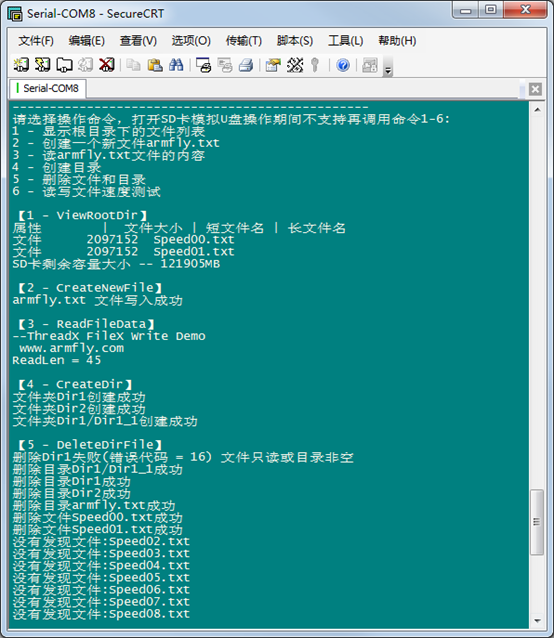
4.10 总结
本章节就为大家讲解这么多,需要大家实现操作一遍来熟练掌握FileX的移植,然后FileX相关的知识点可以到FileX官网查看,资料非常详细。



